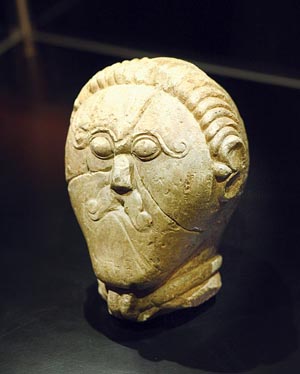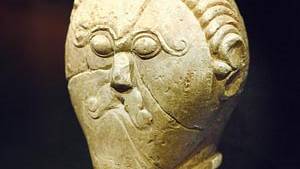History of the Celts
Source: livescience.com
The “Celts” refer to a people that thrived in both ancient and modern times. Today, the term often refers to the cultures, languages and people that are based in Scotland, Ireland, other parts of the British Isles and Brittany in France.“Today six Celtic languages survive — the Gaelic group comprising Irish, Scots Gaelic and Manx and the Britonic group comprising Welsh, Breton and Cornish,” wrote the late professor Dáithí Ó hÓgáin in his book “The Celts: A History” (The Collins Press, 2002). He notes that Manx and Cornish originally died out but have now been revived.

Stone sculpture of Celtic hero. (Wikimedia Commons)
The relationship between modern-day Celts and their ancient forbearers is a contentious issue that scholars have different opinions about. Languages change over time, and people move, and how much modern-day Celtic peoples, language and cultures are related to the ancient Celts is an open question.
Nevertheless the Celts, both ancient and modern, have provided humanity with some fantastic art, culture and stories of martial prowess.
Ancient Celts
The Celts were first referenced in texts about 2,500 years ago. Many of the ancient sources, however, were written by Greeks, Romans and other non-Celts.
Evidence indicates that the Celts were spread out across a vast area of continental Europe. They lived as far east as modern-day Turkey and even served as mercenaries for the Egyptian queen Cleopatra. They were never politically united as a single people but consisted of different groups, including Gauls (from areas including France) and Celtiberians (based in Iberia).
They spoke different languages and, in fact, “given the size of the language area it is rather unlikely that all the people identified by the Greeks and Romans as Celts would have been able to communicate with each other in the same language,” writes Felix Muller, of the Historisches Museum in Berne, in his book “Art of the Celts: 700 B.C. to A.D. 700” (Historisches Museum Berne, 2009).
He notes that identifying particular works of art as “Celtic” can also be challenging. But if we look at art from areas where the Celts were said to flourish, we can see some of the wonders they produced. For instance, more than 2,500 years ago, at a burial mound at Ins in western Switzerland, they left behind a golden globe-shaped object, less than an inch in diameter, that was “decorated with approximately 3600 granules,” an example of the incredibly intricate gold work the Celts could produce.
Ancient writers tended not to discuss Celtic artistic achievements but rather their reputation for fierceness in war. Gauls had succeeded in sacking Rome in 390 B.C. Later that century, when Alexander the Great was campaigning, he received a party of Celts.
“The king received them kindly and asked them when drinking what it was that they most feared, thinking they would say himself, but that they replied they feared no one, unless it were that Heaven might fall on them,” wrote the Greek writer Strabo who lived ca. 64 B.C. – A.D. 24 (translation through Perseus Digital Library).
[...]
Read the full article at: livescience.com
The Standing With Stones website is here.
Tune into Red Ice Radio:
Martin Doutre - Ancient Celtic New Zealand
Michael Tsarion - Irish Origins Part 2 - Colonization & The Celts
James Swagger - Hour 1 - The Newgrange Sirius Mystery
Bob Curran - Dark Fairies, Folklore, Spirits & Creatures






















